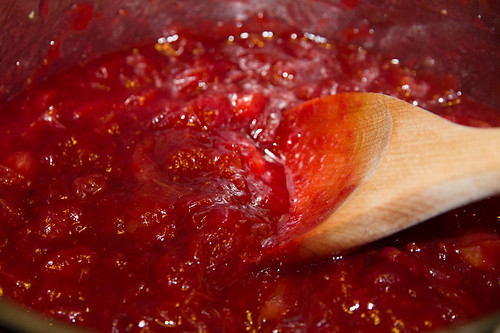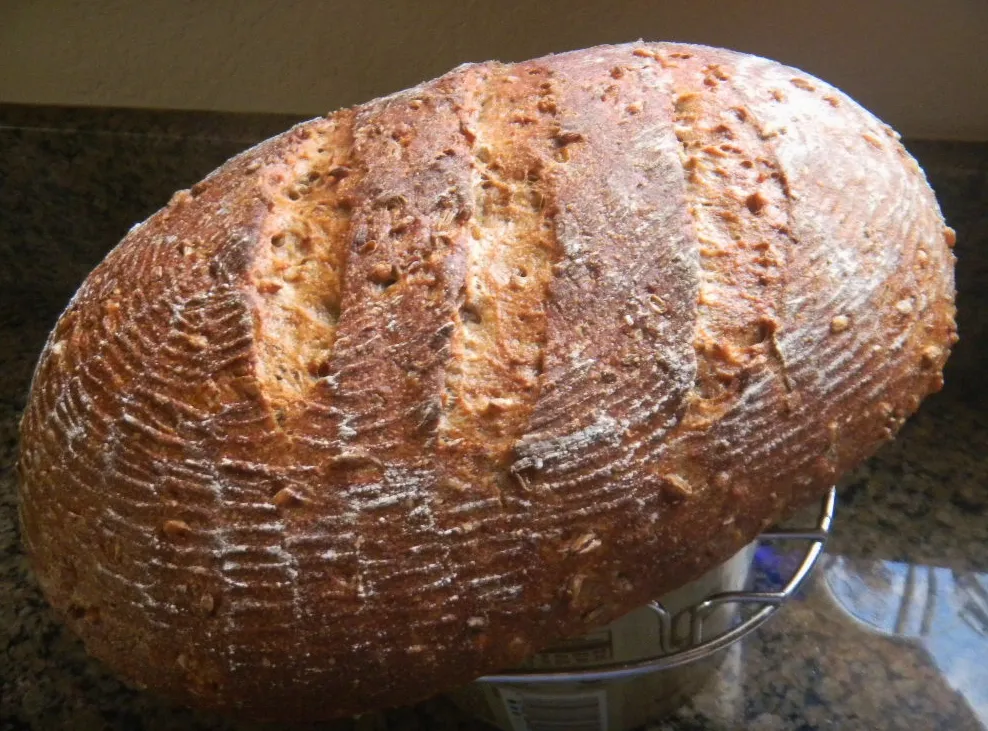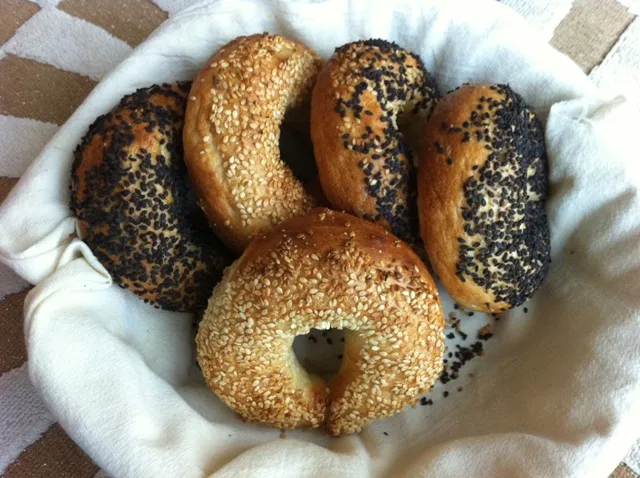Mini Boules

What I'm looking for is some small loaves that would be the perfect size for two people at a single meal. This is my first attempt. I also want to develop a scoring method that results in a loaf that looks like a flower (the one on the right). These are straight out of the oven and on their way to the cooling rack.
It's a Honey Whole Wheat bread with unsalted seeds and nuts (sesame, pumpkin and sunflower seeds; almonds, cashews and walnuts). I'm anxious to cut one of them open and see what it looks like. The smell is awesome, so I'm sure the flavor will be good.
- Log in or register to post comments
- 1 comment
- View post
- aptk's Blog












